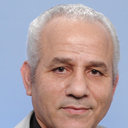Fructose protects rat hepatocytes from anoxic injury. Effect on intracellular ATP, Ca2+i, Mg2+i, Na+i, and pHi.
Keywords
Abstract
The effects of fructose on the intracellular ionic changes evoked by anoxia were studied in freshly isolated rat hepatocytes maintained in agarose gel threads and perfused with Krebs-Henseleit bicarbonate buffer (KHB). Cytosolic free calcium (Ca2+i) was measured with aequorin, intracellular sodium (Na+i) with sodium-binding benzofuran isophthalate, intracellular pH (pHi) with 2'-7'-bis(carboxyethyl)-5,6-carboxyfluorescein, lactic dehydrogenase (LDH) by the increase in NADH absorbance during lactate oxidation to pyruvate, and viability by trypan blue exclusion. ATP, Pi, phosphomonoesters, and the cell phosphorylation potential assessed by the reciprocal of the Pi/ATP ratio were measured by 31P NMR spectroscopy in real time. Intracellular free Mg2+ (Mg2+i) was calculated from the chemical shift of beta-ATP relative to alpha-ATP in the NMR spectra. Anoxia was induced by perfusing the cells with KHB saturated with 95% N2, 5% CO2. When the perfusate contained 5 mM glucose as substrate, anoxia caused a fall in ATP, a rise in Pi, and in the Pi/ATP ratio, a biphasic increase in Ca2+i that reached 1.45 +/- 0.42 microM and a 6-fold increase in LDH. When 15 mM fructose was used as substrate during the anoxic period, intracellular ATP decreased much faster than with glucose, Pi did not increase, and the concentration of phosphomonoesters increased 2.5-fold. During the first hour of anoxia, the Pi/ATP ratio was higher in the fructose than in the glucose group indicating that the hepatocyte phosphorylation potential and ATP decreased faster and to lower levels with fructose than with glucose. On the other hand, ATP and the phosphorylation potential of the fructose group increased during the second hour of anoxia, in contrast to their continuous decline in the glucose group. The major surge in Ca2+i was depressed 52% when glucose was replaced by fructose: Ca2+i reached only 0.7 +/- 0.2 microM instead of 1.45 +/- 0.42 microM (p less than 0.01). Anoxia also caused an increase in Na+i and an intracellular acidosis. The rise in Na+i was significantly greater with fructose than with glucose. Na+i rose from a control value of 15.9 +/- 2.4 to 32.2 +/- 0.4 mM with glucose and to 48.7 +/- 0.7 mM with fructose (p less than 0.001). The decrease in pHi from a control value of 7.43 +/- 0.03 was consistently greater and faster with fructose than with glucose: 6.59 +/- 0.03 and 7.04 +/- 0.01, respectively. At the same time, fructose completely suppressed LDH release and reduced the loss of viability produced by anoxia from 27.7 +/- 2.9 to 14 +/- 3.1% (p less than 0.05).



